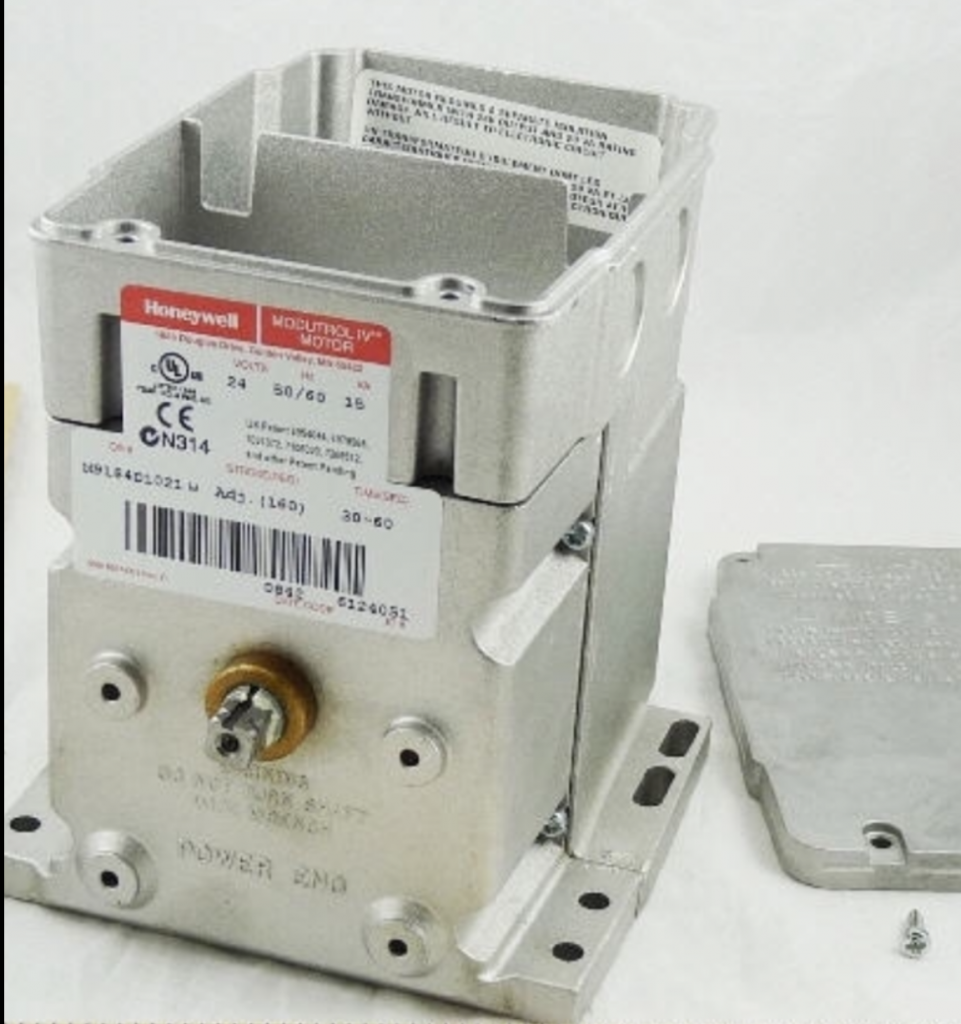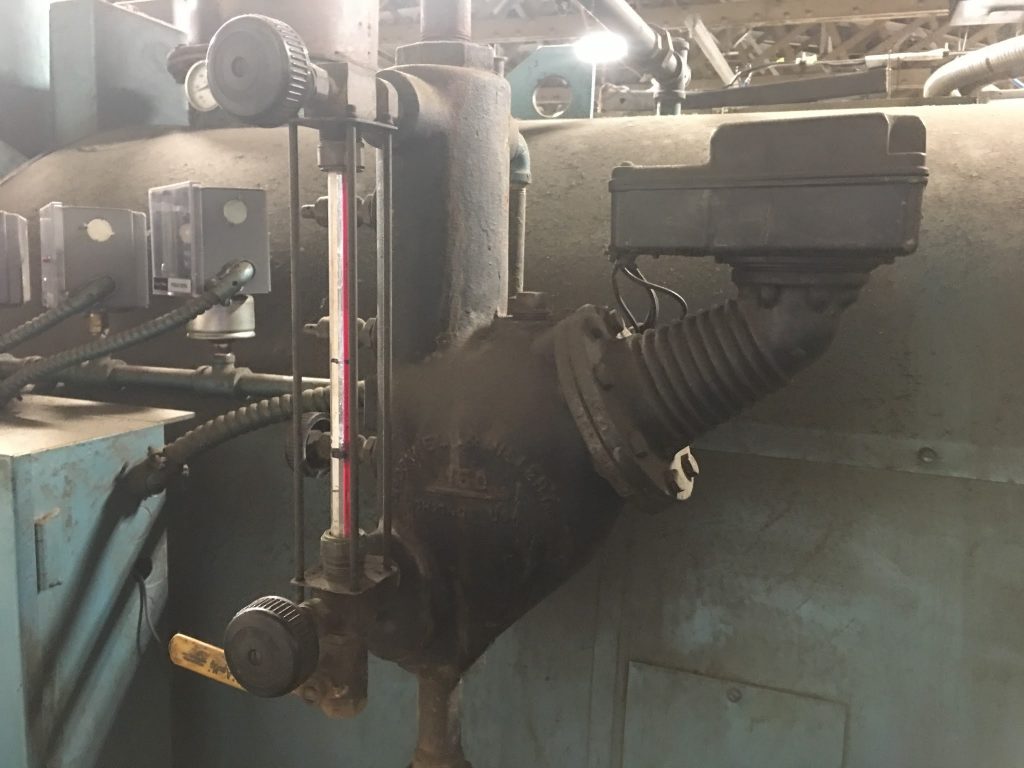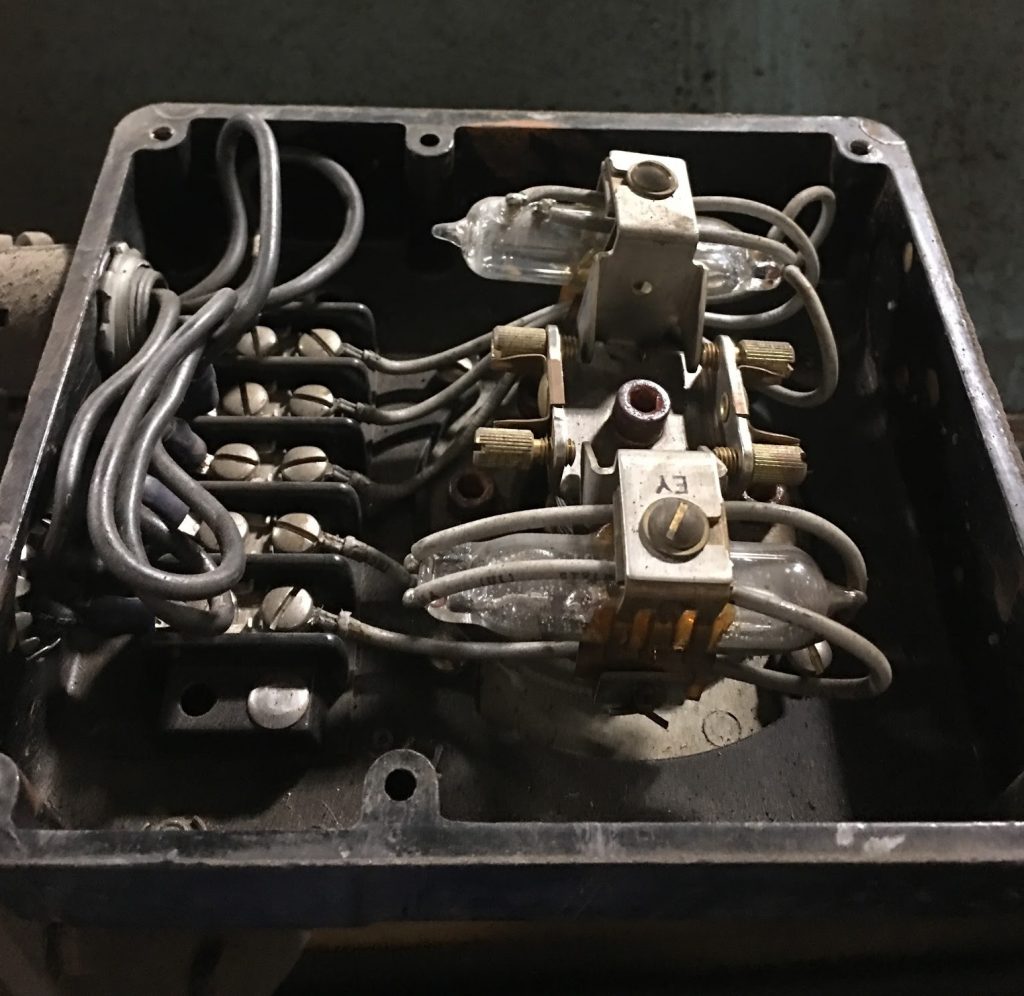Get Tech Tips
Subscribe to free tech tips.
Boiler Basics Part 3 – Steam
This article was written by Senior Boiler Tech Justin Skinner. Thanks, Justin.
Steam plays a very important part in all of our lives, whether we know it or not. Virtually every article of clothing and accessory you are wearing right now relied on steam for either manufacturing or packaging. Hospitals use large steam boilers for dehumidification, sterilizing medical equipment, and plenty of regular old space heating and domestic hot water through heat exchangers. The power entering my house is generated by a high-pressure steam boiler a few miles away. Here are some common components used to operated steam boilers safely and efficiently.
Operating/High Limit Controls:

The operating control shown here is made by Honeywell, and it is the most common that I run into. It is basically a normally open/normally closed set of contacts with 1 common feeding both. There are 3 terminals: R, W, and B. Of those, R is common. The switch through R to B opens on a rise in pressure, and the switch between R and W closes on a rise in pressure.
Typical wiring is done through the R to B circuit, breaking the control voltage going to the burner that calls for it to start. The user sets the pressure. There are 2 scales to be set on this control. The first is the pressure at which R and B open, and the second is a subtractive differential in which the switch closes.
Let's say you have your first scale, the cutoff pressure set at 10, and the second scale set at 3. That means the R to B switch will open at 10, shutting off the burner. It will close at 7 (10-3=7), indicating a pressure drop and enabling the burner to run. If you change the second subtractive scale to 5, it will close the switch at 5 (10-5=5). The high limit shown is a normally closed switch with a manual reset that opens on a pressure rise. This control will not reset itself should the pressure get high enough to open its switch. It is a safety device that should never be bypassed, and if one is tripping and needs to be reset, more investigation is required to determine the cause.
Modulation Control
The mod control is used to increase or decrease the firing rate of the burner. These controls aren’t typically seen on smaller single or 2-stage burners, but we see them in larger burners that require different burner firing rates depending on steam load and requirements. They contain the same terminals as the operating control listed above (R, W, and B), but they act completely differently.
The mod control pictured is not a typical open/closed switch but rather a potentiometer that changes in resistance with a change in pressure. Basically, as the pressure rises, resistance is decreased between R and W, which causes a connected modulation motor to drive shut and drive the burner to a lower firing rate. Similarly, when the pressure falls, resistance is decreased between R and B, which drives the mod motor open and increases the firing rate. There are mod controls that are normally open/closed switches, and they look identical to the one pictured above. If you look at the inside cover, you can usually find a diagram that shows operation or a part number to look it up. Below is a typical modulation motor. This motor is connected to air and fuel dampers and valves, adding or taking away both to the flame in unison based on the steam load and input from the modulation controller.

Condensate/Deaerator Tank
In a steam system, superheated water (steam) is sent out to the piping system. As the steam cools, it condenses in liquid water. This water is collected in a tank and reused to feed the boiler. There are a few reasons for this. The most important reason is safety.
When a boiler gets up to temperature and is making steam, there is an optimal water level in the boiler where below is water and above is steam, almost like an accumulator on a heat pump system. At atmospheric pressure, water boils at 212 degrees F. In a pressurized steam system, that temperature is higher per thermodynamic laws. Increase pressure, increase boiling (vaporizing) temperature. So the liquid water in the lower portion of the boiler is above 212 degrees when steam is being produced. If cold water is introduced to this environment, it rapidly (and potentially violently) expands. Water expands 1,700 times when it is converted to steam. We collect the condensate, which hopefully is still hot, and feed it to the boiler because hot water does not flash to steam as easily as cold water. It is safer and easier on the boiler vessel to use pre-heated water to make steam. Cold water going to a hot boiler can be loud and pretty scary. It bangs and pops, and the boiler can move some. Optimally, the water being fed from the tank should be as close to the boiling temperature as possible. Also, water heated in the feed tank releases oxygen molecules from the feed water, which is important for preventing corrosion and scale buildup in the boiler. Less oxygen in the boiler, the less rust. It's common to run steam to a feed tank to ensure the feed water is sufficiently heated. Water treatment chemicals are often added to the feed tank and pumped to the boiler through the feed water to inhibit rust and corrosion. And of course, reusing water is a cost-saver for the customer. It’s more expensive to treat and heat fresh water than reuse pretreated and already hot water. Below is a typical condensate tank.

Water Level Controls
The water level is important in steam boilers, and they aren’t completely full. There a level at which the internal components are sufficiently covered in water, and there is room for the water to boil off above. There are many types of level controls, the most common for larger boilers being shown below. Made by McDonnell-Miller, this is a float-type controller with a series of normally open and normally closed switches. The switches control the feed pump that feeds the boiler from the condensate tank and can be configured to shut off the boiler if the boiler water level gets too low or too high. They can also activate an alarm circuit. Smaller steam boilers require a similar device, and there are many varieties out on the market. These controls are crucial in the safe operation of a steam boiler. If the water level drops and the boiler dry fires, bad things happen. A quick Google search of serious boiler explosions will indicate in the reports that bypassing or jumping out the switches on these devices is the most common cause. If you are not pretty familiar with the device and don’t know how it's supposed to work, the last thing you should do is mess with it. Call a senior guy or tech support or someone. Boilers do explode; don't be the cause of it. There are probe-type water level safeties as well. They use power to detect conductivity from the probe through the water. If the water level drops, no conductivity is detected, and the boiler should shut down. Level controls and safeties should be inspected and tested, and if they fail, they should be repaired or replaced immediately.

Float-type level controller and sight glass

Level switches inside float head
Sight Glass
The sight glass is a real-time view of the boiler water level and a quick indicator that all the feed water controls are in working order. I am in the habit of looking at the sight glass before anything else when I come into a boiler room and constantly checking it while I am working in there. As stated above, boilers in low water conditions can be catastrophic, so it’s crucial to pay attention to. If you come across a boiler with no water in the sight glass and you don’t know what to check or why, the best thing is to turn the burner switch off, get the heck out of there, and call for backup. The last thing you should do is start turning on pumps and opening valves to try to fill a hot boiler that is under pressure. Your personal safety is much more important than getting the boiler up and running.
Steam boilers can be dangerous if not properly serviced and maintained. I've run into situations that were pretty intense before and had to call for help many times. It's tough for a lot of techs to admit they don't know something and they need help (me included), and it's especially tough when the boss is telling you to just get it done. But safety and getting home to your family is the most important thing we will do today. And if you are in an uncomfortable situation with a larger steam boiler, asking for help may mean the difference between going home or not. There are plenty of other components involved with steam boilers, but this is a basic overview. By reader request, the next article will cover basic boiler piping systems. If there is something you would like clarification on or a topic I did not cover, feel free to email or message me or comment below.
—Justin Skinner











Comments
I think the article was supposed to say “hospitals use large steam boilers for humidification”‘ instead of “dehumidification”.
I think the article was supposed to say “hospitals use large steam boilers for humidification”‘ instead of “dehumidification”.
Not for steam reheat coils dale. seperate humidifiers are used to add humidity more often than steam from the boiler. Go clean your van
Not for steam reheat coils dale. seperate humidifiers are used to add humidity more often than steam from the boiler. Go clean your van
To leave a comment, you need to log in.
Log In